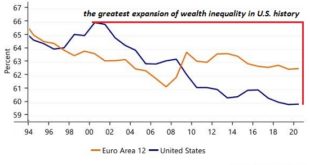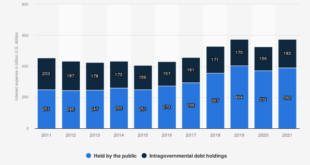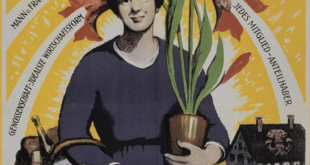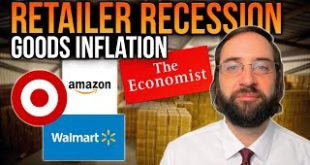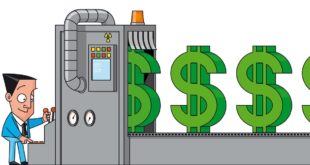The irony is that the suppression of dissent is the suppression of competing ideas that generate systemic stability via rapid adaptation. Nations that appear stable may fail once they’re under pressure.What do I mean by “under pressure”? Pressure can come from many sources: invasion, civil war, prolonged scarcities of essentials, natural disasters, financial crises, droughts, pandemics and social disorder triggered by inequality and corruption. Pressure diminishes...
Read More »The Epistemological Case for Capitalism
[This article is excerpted from chapter 21 of Mises: The Last Knight of Liberalism.] In the early 1950s, Mises’s NYU seminar dealt increasingly with epistemological questions. As he said to Ludwig Lachmann, he felt that the analysis of epistemological problems would be the number one task in the social sciences in the coming years.1 It was the topic of his last two monographs: Theory and History (1957) and The Ultimate Foundation of Economic Science (1962). The...
Read More »Rising Interest Rates May Blow Up the Federal Budget
Congress enjoys exorbitant political privilege in the form of cheap deficit spending—but it may soon come to an end. Original Article: “Rising Interest Rates May Blow Up the Federal Budget” In fiscal year 2020, at the height of covid stimulus mania, Congress managed to spend nearly twice what the federal government raised in taxes. Yet in 2021, with Treasury debt piled sky high and spilling over $30 trillion, Congress was able to service this gargantuan...
Read More »When cooperatives wanted to prevent a world war
Blossoming cooperative ideas: a common economy, consumer protection and equality of the sexes. Dora Hauth-Trachsler/Schweizersiches Sozialarchiv The word “cooperative” is everywhere in Swiss daily life. What’s often forgotten is that cooperatives were once at the forefront of a worldwide movement that advocated for consumer rights, affordable rents – and world peace. In his opening speech at the tenth international congress of the International Cooperative Alliance...
Read More »Inflation, Core CPI, and the Federal Reserve: Marc Chandler
Marc Chandler, chief market strategist at Bannock Burn Global FX, discussed the state of inflation in the U.S., the difference between core and headline CPI, and how things are trending with consumer prices. Listen to the full podcast episode here: https://contrarianpod.com/content/podcasts/season4/assessing-precarious-stock-markets-marc-chandler/ Consider becoming a premium subscriber to gain early access to the episodes and to the Daily Contrarian briefing:...
Read More »The Economist Reviews Pandemic Goods Boom 2020-22 [Eurodollar University, Ep. 261]
The Economist recounts how the pandemic led to a goods-consumption-boom and whether post-pandemic economics means normalization, or a services boom or a recession. ----EP. 261 REFERENCES---- Could a shift from goods to services ease inflation?: https://econ.st/3OYNOwQ RealClear Markets Essays: https://bit.ly/38tL5a7 Epoch Times Columns: https://bit.ly/39ESkRf -------THE EPISODES------- YouTube: https://bit.ly/310yisL Vurbl: https://bit.ly/3rq4dPn Apple: https://apple.co/3czMcWN Deezer:...
Read More »Monday Blues
Overview: The US dollar is bid against most currencies today, encouraged not just by good news in the US and poor news out of China, where Covid is flaring up and new social restrictions are fared, while Macau has been lockdown for a week. The energy crisis in Europe is fanning fears of a recession before the ECB lift rates above zero. Japanese markets bucked the global move and advanced, which it often does after the government wins an upper house election. The...
Read More »Inflation IS Money Supply Growth, Not Prices Denominated in Money
In the recent Wall Street Journal article “Inflation Surge Earns Monetarism Another Look,” Greg Ip writes that a recent surge in inflation is not likely to bring authorities to reembrace monetarism. According to Ip, money supply had a poor record of predicting US inflation because of conceptual and definitional problems that haven’t gone away. The head of the monetarist school, the late Milton Friedman, held that inflation is always and everywhere a monetary...
Read More »Nine Ways Debt and Deficit Spending Severely Harm African Societies
Systemic debt and deficit spending are intrinsic features of today’s economic system. Unlike classical economics, where markets play the leading role and governments the supporting one, the existing economic model, driven by Keynesian theory, has inverted the roles. Keynesian economics, like other statist economic theories, is distrustful of (free) markets, thus making the state, an inherently bureaucratic and coercive institution, the captain of economic and social...
Read More »Charities have yet to spend most of Ukraine donations
People wait to receive humanitarian aid in Kramatorsk, Ukraine, on May 28, 2022. Copyright 2022 The Associated Press. All Rights Reserved. Despite record public donations for Ukraine, four months since the start of the invasion by Russia, Swiss aid agencies have only been able to spend a small amount of the funds on humanitarian work. An investigationExternal link by the SonntagsZeitung newspaper published on July 10 has revealed that Swiss Solidarity, the Swiss Red...
Read More » SNB & CHF
SNB & CHF

